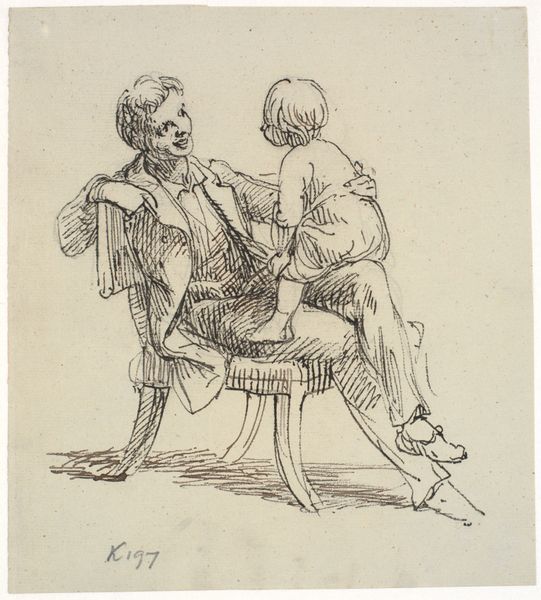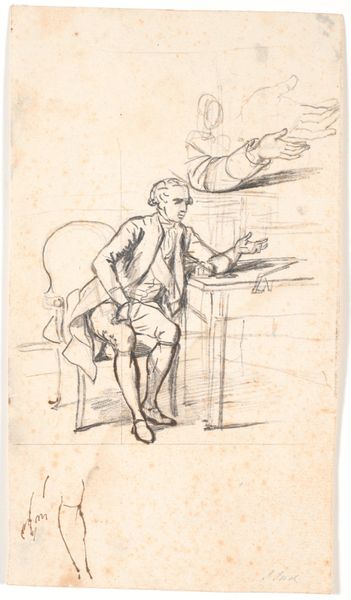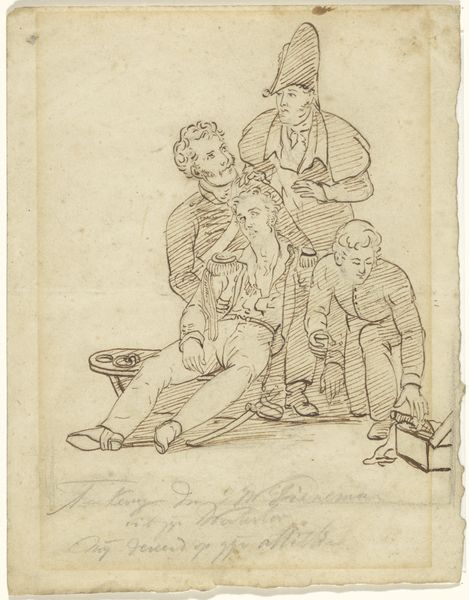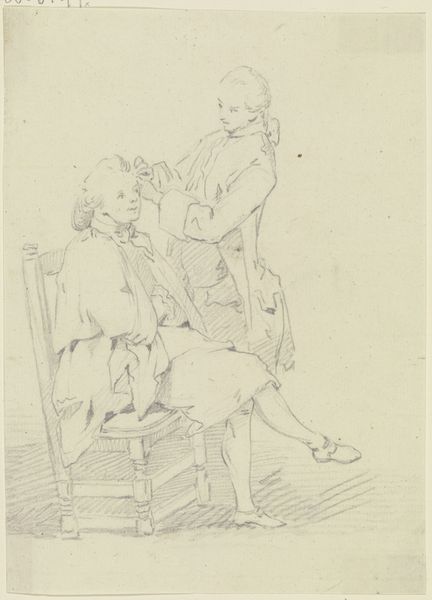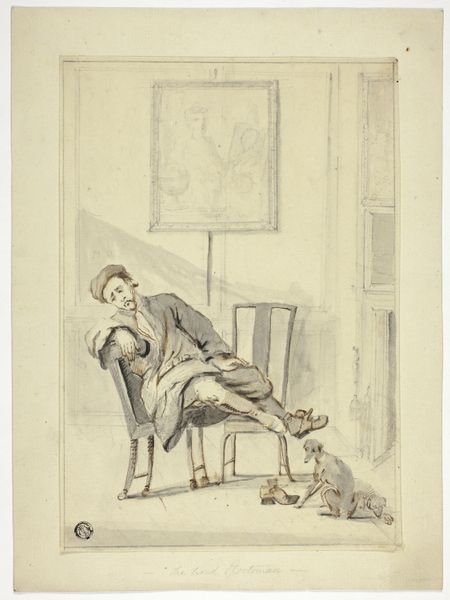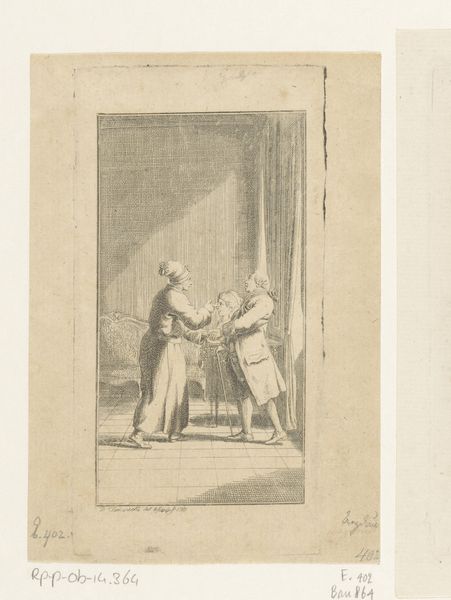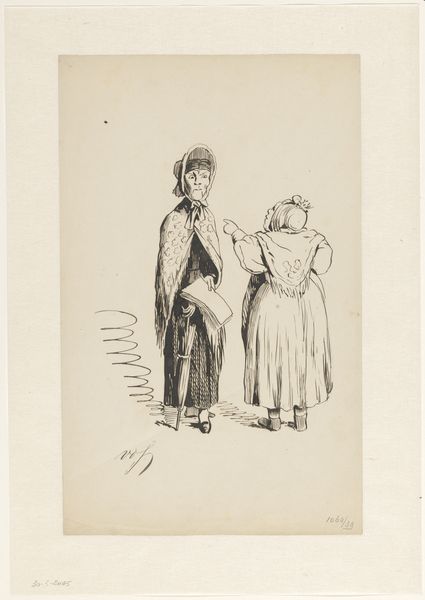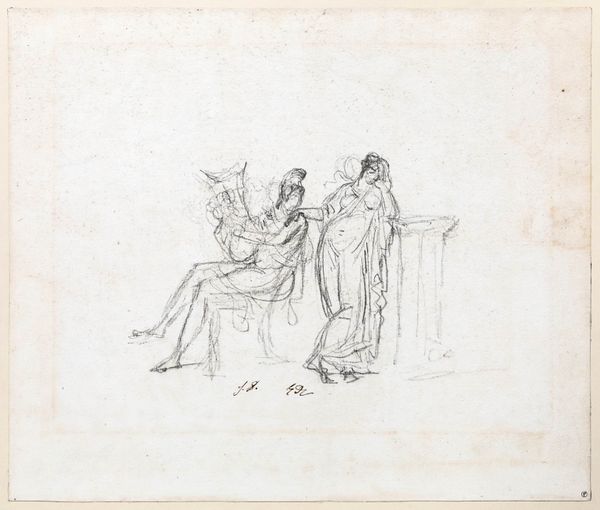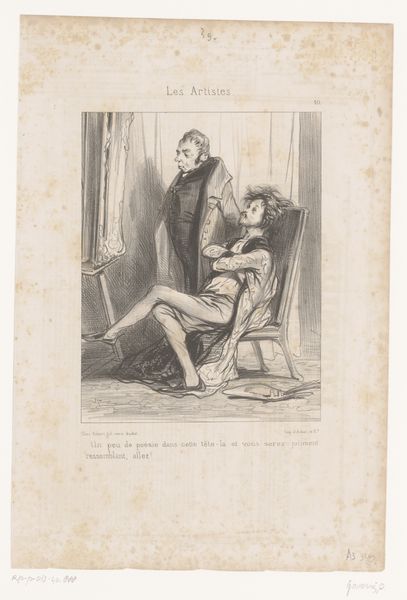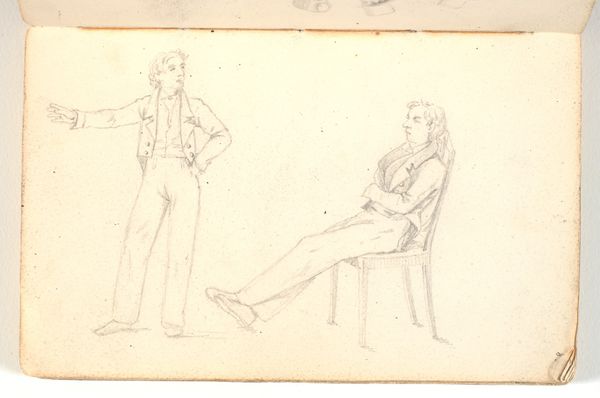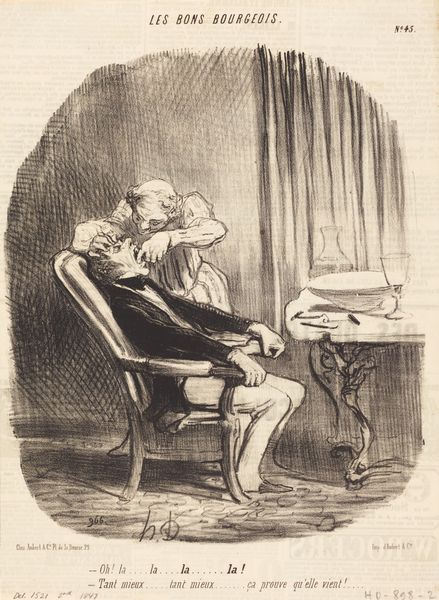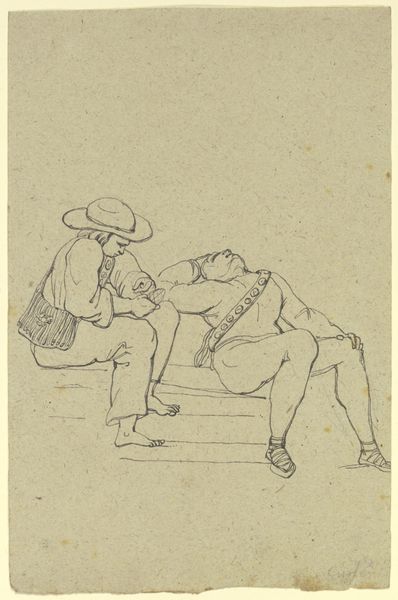
drawing, paper, ink
#
drawing
#
narrative-art
#
figuration
#
paper
#
ink
#
romanticism
#
genre-painting
Dimensions: image (irregular): 8.26 × 6.99 cm (3 1/4 × 2 3/4 in.) sheet: 12.7 × 10.64 cm (5 × 4 3/16 in.)
Copyright: National Gallery of Art: CC0 1.0
Editor: We're looking at "In Prison," a drawing in ink on paper, dating from the 1840s by William Sidney Mount. It strikes me as quite a somber piece, very intimate in its depiction of sorrow and support. What do you see in it? Curator: I see a story etched in ink, a melancholic tableau of confinement and comfort. There’s something heartbreaking about the man’s posture – the weight of the world seems to be pressing him into that simple chair. And then, that woman, her hand a delicate bridge across the abyss of his despair… I wonder, what brought him here, to this interior darkness? Editor: It's the woman's gesture, that touch, which stands out against the bleakness. I suppose it emphasizes his isolation even within a moment of potential connection. Curator: Exactly! It's almost as though Mount is saying, “Even in our darkest moments, there can be glimmers of humanity.” Perhaps it's a commentary on the human condition, or a reflection on Mount’s personal encounters. He sure was a sensitive man. What kind of "prison" do you imagine? Is it literal or more metaphorical? Editor: I lean towards metaphorical. A prison of the mind, perhaps? Societal constraints? His slumped posture just communicates that inner turmoil so well. Curator: Yes, it resonates that way, doesn't it? Romanticism wasn’t afraid to probe the shadowy corners of the self. I think Mount masterfully captured this moment. This gives me a somber mood, maybe it’s time to move onto something a bit more colorful… Editor: I agree. It's definitely left me with much to consider about inner struggle and the small comforts we find.
Comments
No comments
Be the first to comment and join the conversation on the ultimate creative platform.
